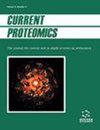Identification of Potential Immunogenic Epitopes against SARS-CoV-2 using In-Silico Method: An Immunoinformatics Study
IF 0.5
4区 生物学
Q4 BIOCHEMICAL RESEARCH METHODS
引用次数: 0
Abstract
Severe Acute Respiratory Syndrome (SARS-CoV-2), a zoonotic virus, is the pathogenic causal agent for the ongoing pandemic. Despite the lethality of the disease, there are no therapeutic agents available to combat the disease outbreak; and the vaccines currently accessible are insufficient to control the widespread, fast-mutating virus infection. This research study focuses on determining potential epitopes by examining the entire proteome of the SARS-CoV-2 virus using an in-silico approach. To design a vaccine for the deadly virus, the entire proteome of the SARS-CoV-2 virus was screened for identification of potential epitopes in order to identify the potent peptide candidate which is both unique and simultaneously solves the purpose of the vaccine discovery. It is mandatory to identify the suitable B-cell and T-cell epitopes of the observed SARS-CoV-2 Surface Glycoprotein (QKN61229.1). These epitopes were subjected to various tests, including antigenicity, allergenicity, and other physicochemical properties. The T-cell epitopes that met all of the criteria were then subjected to Population Coverage Analysis. It helped better understand the response of epitopes to the target population, compute the conservancy of a peptide, and then cluster them based on their sequence match, MHC binding, and T-cell restriction sites. Lastly, the interactions between the T-Cell Receptor (TCR) and a peptide-MHC were studied to gain a thorough understanding of MHC-restriction to design a peptide-vaccine. The results showed that there were 4 B-Cell epitopes, 2 MHC-I epitopes, 4 MHC-II epitopes that qualified all the subjected tests and thus have an affinity to prominent antigens. ased on the results obtained from this study, the estimated peptides are a promising candidate for peptide-vaccine design and development.用芯片方法鉴定抗SARS-CoV-2的潜在免疫原性表位:免疫信息学研究
严重急性呼吸综合征(SARS-CoV-2)是一种人畜共患病毒,是当前大流行的致病因子。尽管这种疾病具有致命性,但没有可用的治疗药物来对抗这种疾病的爆发;目前可获得的疫苗不足以控制广泛、快速变异的病毒感染。本研究的重点是通过使用计算机方法检测SARS-CoV-2病毒的整个蛋白质组来确定潜在的表位。为了设计一种针对SARS-CoV-2病毒的疫苗,我们对SARS-CoV-2病毒的整个蛋白质组进行筛选,以鉴定潜在的表位,以鉴定出既独特又有效的候选肽,同时解决疫苗发现的目的。必须鉴定观察到的SARS-CoV-2表面糖蛋白(QKN61229.1)的合适b细胞和t细胞表位。这些表位进行了各种测试,包括抗原性、过敏原性和其他物理化学性质。然后对符合所有标准的t细胞表位进行人口覆盖分析。它有助于更好地理解表位对目标群体的反应,计算肽的保护,然后根据它们的序列匹配,MHC结合和t细胞限制位点对它们进行聚类。最后,研究了t细胞受体(TCR)与肽- mhc之间的相互作用,以深入了解mhc的限制,从而设计肽疫苗。结果表明,有4个b细胞表位,2个MHC-I表位,4个MHC-II表位符合所有的实验条件,因此对突出的抗原具有亲和力。根据这项研究的结果,估计的肽是肽疫苗设计和开发的有希望的候选肽。
本文章由计算机程序翻译,如有差异,请以英文原文为准。
求助全文
约1分钟内获得全文
求助全文
来源期刊

Current Proteomics
BIOCHEMICAL RESEARCH METHODS-BIOCHEMISTRY & MOLECULAR BIOLOGY
CiteScore
1.60
自引率
0.00%
发文量
25
审稿时长
>0 weeks
期刊介绍:
Research in the emerging field of proteomics is growing at an extremely rapid rate. The principal aim of Current Proteomics is to publish well-timed in-depth/mini review articles in this fast-expanding area on topics relevant and significant to the development of proteomics. Current Proteomics is an essential journal for everyone involved in proteomics and related fields in both academia and industry.
Current Proteomics publishes in-depth/mini review articles in all aspects of the fast-expanding field of proteomics. All areas of proteomics are covered together with the methodology, software, databases, technological advances and applications of proteomics, including functional proteomics. Diverse technologies covered include but are not limited to:
Protein separation and characterization techniques
2-D gel electrophoresis and image analysis
Techniques for protein expression profiling including mass spectrometry-based methods and algorithms for correlative database searching
Determination of co-translational and post- translational modification of proteins
Protein/peptide microarrays
Biomolecular interaction analysis
Analysis of protein complexes
Yeast two-hybrid projects
Protein-protein interaction (protein interactome) pathways and cell signaling networks
Systems biology
Proteome informatics (bioinformatics)
Knowledge integration and management tools
High-throughput protein structural studies (using mass spectrometry, nuclear magnetic resonance and X-ray crystallography)
High-throughput computational methods for protein 3-D structure as well as function determination
Robotics, nanotechnology, and microfluidics.
 求助内容:
求助内容: 应助结果提醒方式:
应助结果提醒方式:


